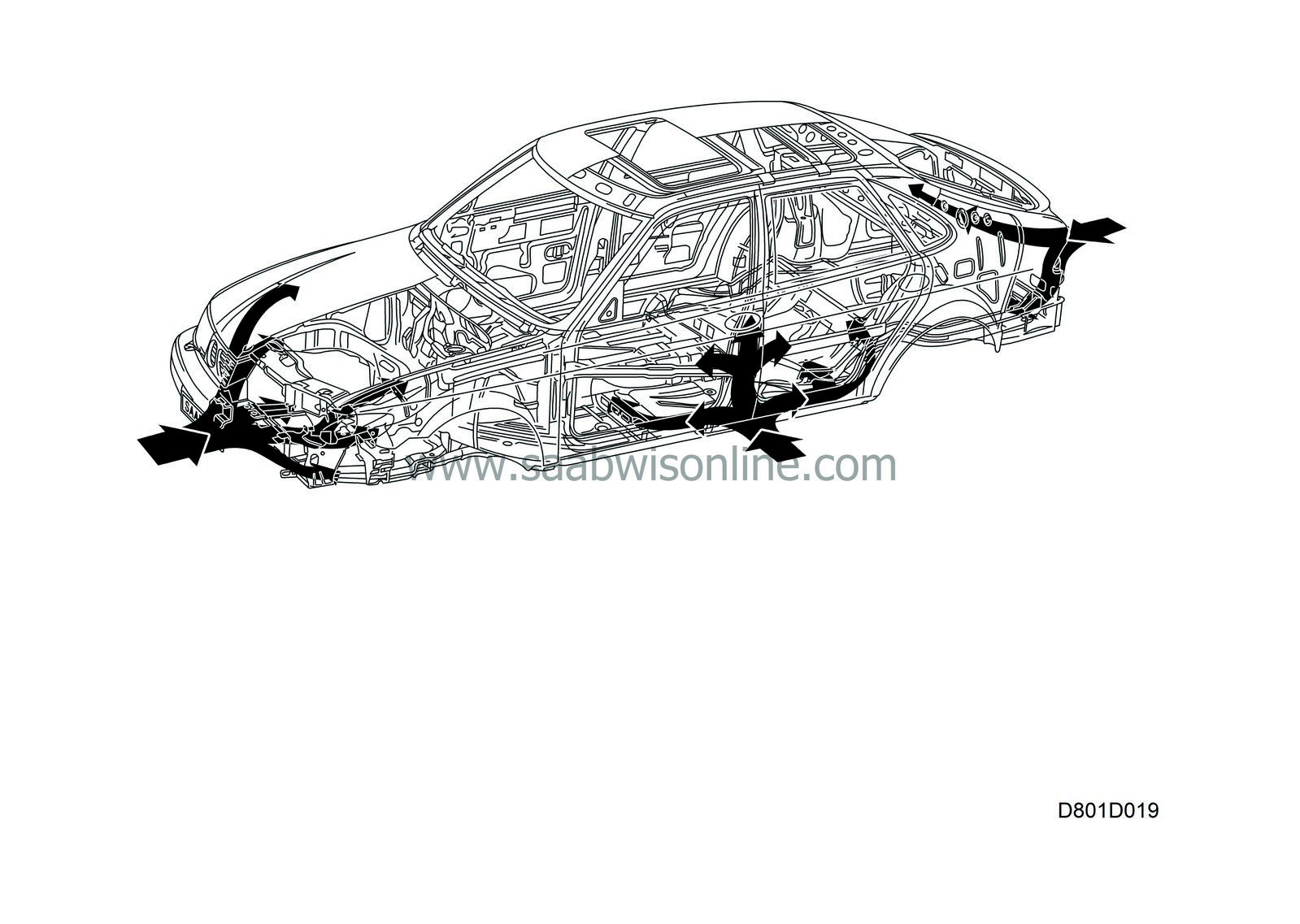Impact safety
| Impact safety |
The body of the Saab 9-3 is constructed to create a survival area for the driver and passengers in case of a collision. Basically, the forces created in a collision are slowed down by the deformation zones and propagated by the cabin beam system so that the stresses are as evenly distributed as possible.
The generous front and rear deformation zones are designed to collapse progressively. They deform more and more as the force on them increases, without having sheet metal shearing and penetrating the cabin. In case of a collision from the side, the door beams and sills absorb the forces and distribute them through the floor cross-members and B-pillar to the rest of the car body.
It is extremely important to ensure that there is no change in the efficiency of the energy-absorbing deformation zones and stable cabin enclosure after repairs. The cabin enclosure must never be weaker after repairs. However, the deformation zones must neither be made stronger than they were before any damage occurred. An excessively strong front or rear body section will propagate the forces arising in a collision instead of slowing them down, with the result that the forces acting on the cabin enclosure will be much more powerful.
| Important | ||
|
In order for Saab Automobile to be able to accept responsibility and guarantee that the car will have the same high standard of passive safety after a repair as it did before, it is extremely important that the work is done using only the correct methods and correct materials. |
||



